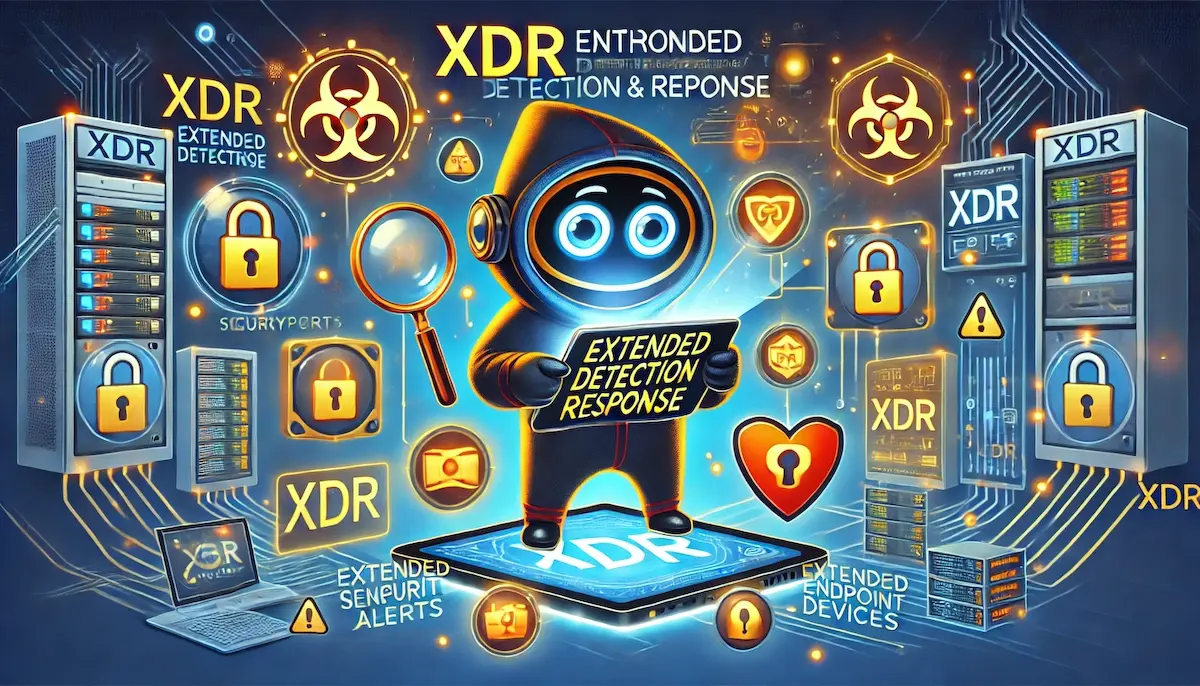Extended Detection and Response (XDR) is a comprehensive cybersecurity solution designed to provide integrated and coordinated detection and response capabilities across an organization’s entire IT environment. XDR extends the capabilities of traditional Endpoint Detection and Response (EDR) by incorporating data from multiple security layers, including network, email, server, and cloud workloads.
What is XDR?
XDR is a unified security platform that consolidates data from various security products into a centralized system. This holistic approach allows for better visibility, faster threat detection, and more efficient response actions across an organization’s security landscape. XDR solutions aim to break down security silos and provide a more comprehensive view of potential threats.
Key Components of XDR
XDR systems typically encompass several critical components:
- Data Integration: Collects and correlates data from various security layers, including endpoints, networks, email, servers, and cloud environments.
- Threat Detection: Uses advanced analytics, machine learning, and threat intelligence to identify and prioritize potential threats.
- Automated Response: Facilitates automated or orchestrated responses to detected threats, reducing the time to mitigate and remediate incidents.
- Incident Investigation: Provides tools and capabilities for in-depth analysis of security incidents, helping to understand the scope, impact, and root cause.
- Continuous Monitoring: Ensures ongoing surveillance and real-time visibility across the entire IT environment.
Benefits of XDR
Implementing an XDR solution offers several significant benefits for organizations:
- Unified Visibility: Provides a comprehensive view of security threats across multiple layers, improving situational awareness and reducing blind spots.
- Improved Threat Detection: Enhances the ability to detect sophisticated and multi-vector attacks by correlating data from various sources.
- Faster Incident Response: Streamlines and automates response actions, enabling quicker containment and remediation of threats.
- Reduced Complexity: Simplifies security operations by consolidating multiple tools and data sources into a single platform.
- Enhanced Efficiency: Optimizes the use of security resources and personnel by automating routine tasks and focusing on high-priority threats.
Implementing XDR
Implementing an XDR solution involves several critical steps to ensure its effectiveness:
- Assessment: Evaluate the organization’s current security posture and identify gaps and requirements.
- Strategy Development: Develop a comprehensive XDR strategy that aligns with business objectives and security needs.
- Solution Selection: Choose an XDR platform that integrates well with existing security tools and meets the organization’s needs.
- Deployment: Implement the XDR solution, ensuring proper configuration and integration with other security systems.
- Training: Educate IT and security staff on how to use the XDR system effectively, including threat detection and response procedures.
- Monitoring and Maintenance: Continuously monitor the XDR system to ensure it functions correctly and update policies and configurations as needed to adapt to evolving threats.
The Future of XDR
As cyber threats continue to evolve, XDR solutions are expected to advance with several key trends:
- AI and Machine Learning: Leveraging AI and machine learning to enhance threat detection, predictive analytics, and automated response capabilities.
- Integration with Security Orchestration, Automation, and Response (SOAR): Combining XDR with SOAR to further streamline and automate security operations.
- Cloud-Native XDR: Developing XDR solutions that are optimized for cloud environments, providing seamless protection for cloud workloads.
- Proactive Threat Hunting: Enhancing XDR capabilities to actively search for threats rather than relying solely on alerts and detections.
- Improved User Experience: Focusing on user-friendly interfaces and workflows to make XDR solutions more accessible and effective for security teams.
Blockfine thanks you for reading and hopes you found this article helpful.
